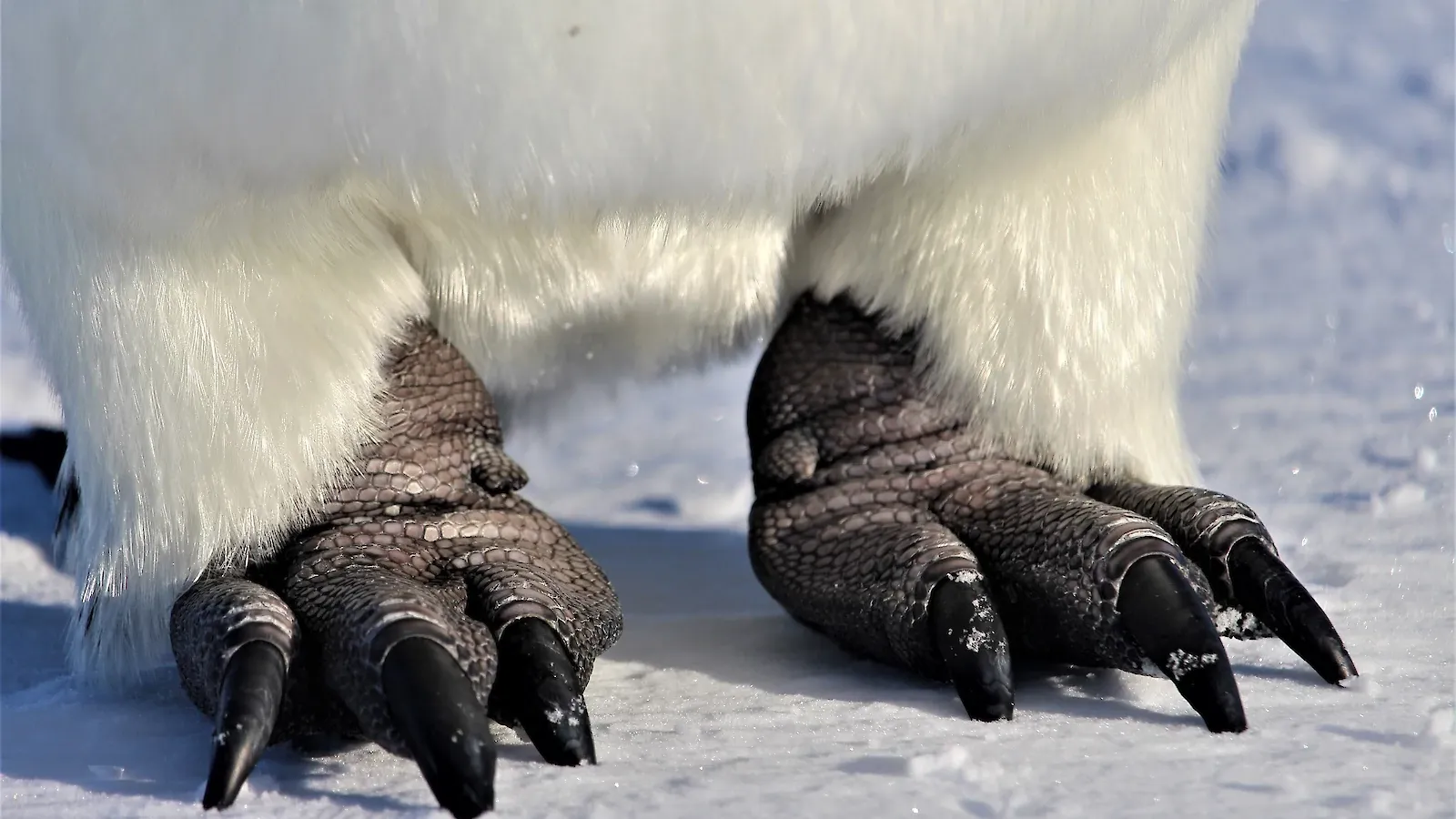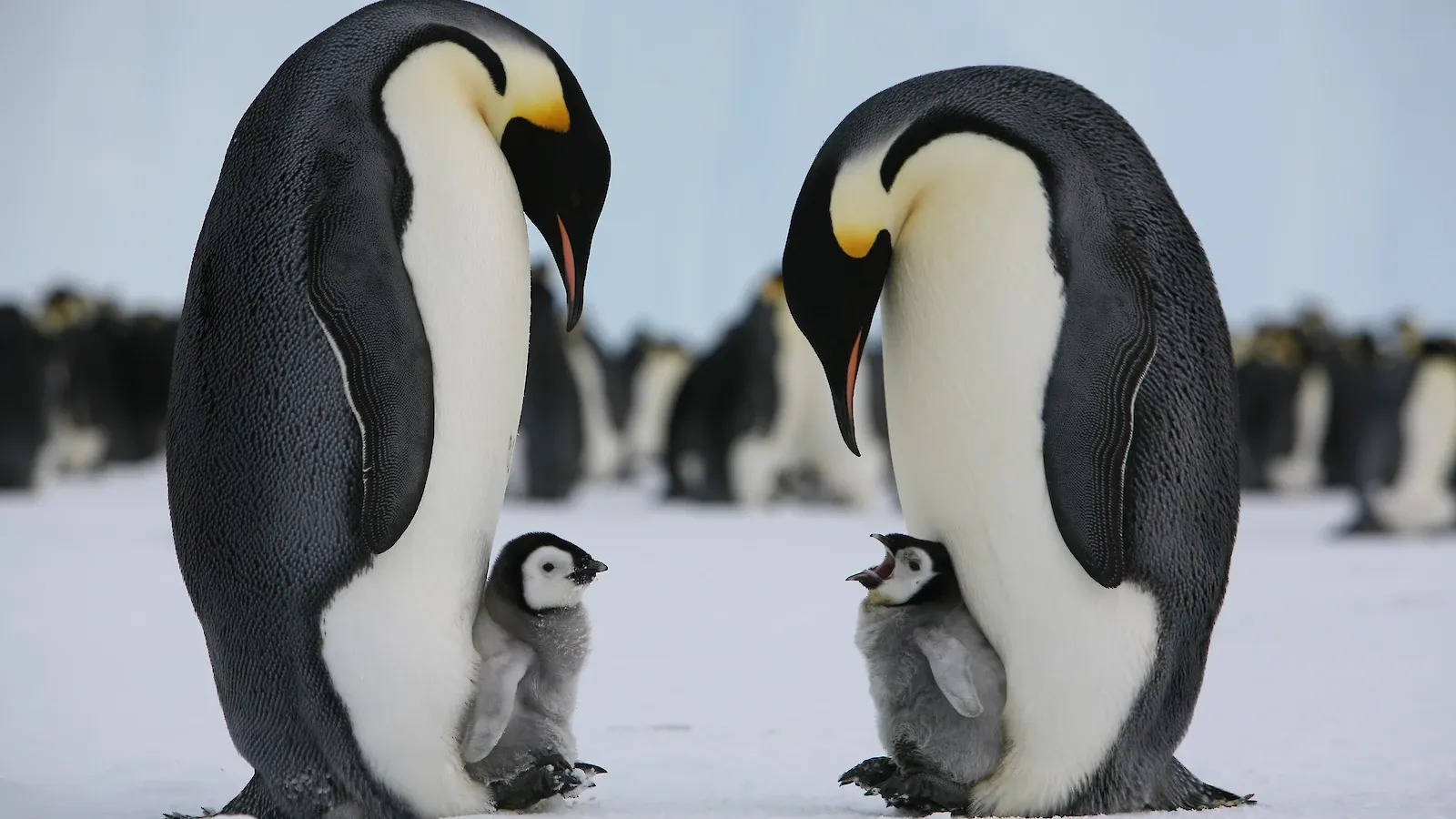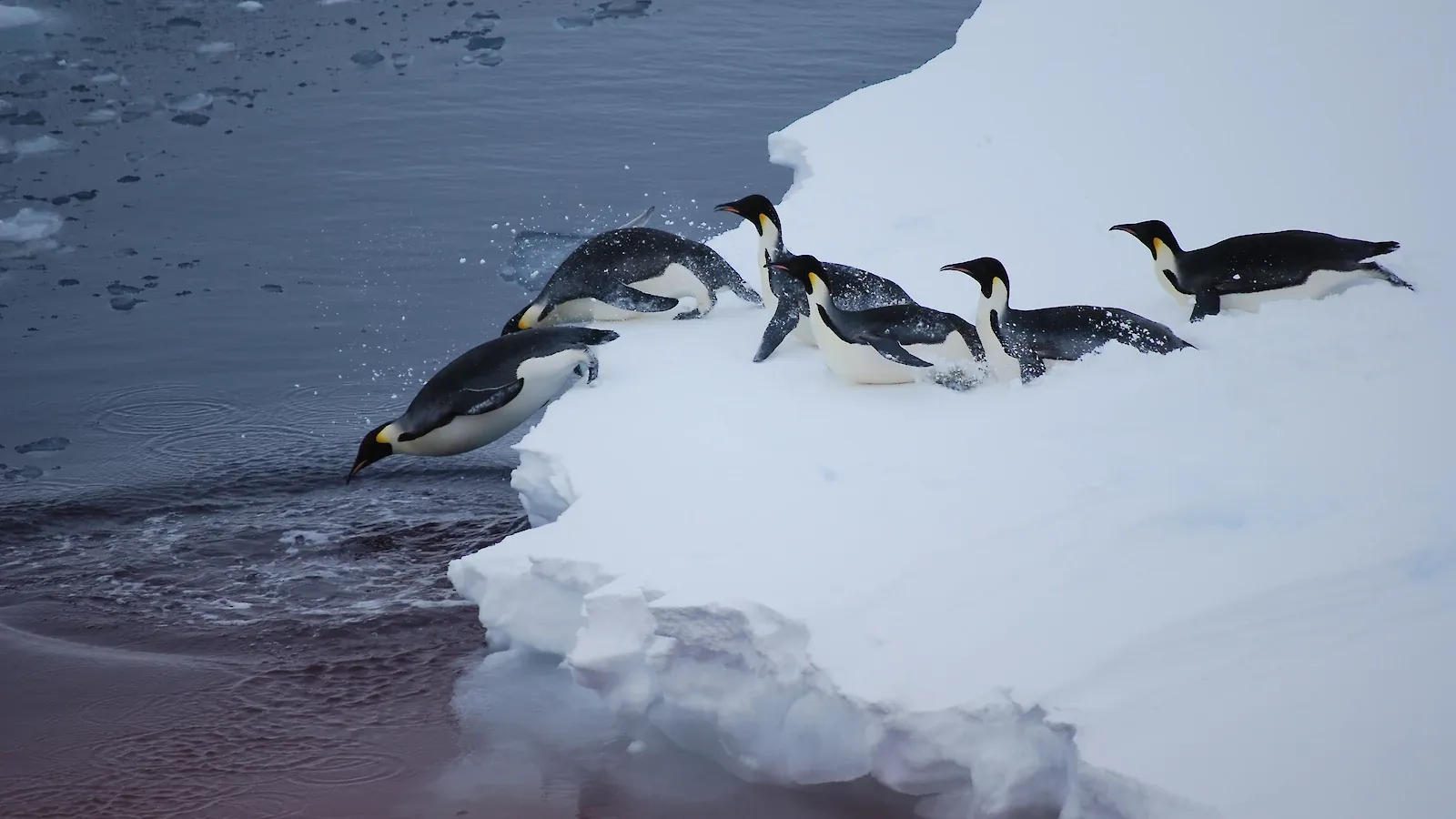The Emperor penguin (Aptenodytes forsteri) is a true marvel of adaptation, uniquely equipped to thrive in the harshest climate on Earth – the Antarctic winter. These magnificent birds not only endure but also breed during this brutal season, showcasing remarkable survival strategies. Our understanding of their lives, including their movements, needs, and the potential impacts of human activities, is crucial for their continued survival. As the largest of all penguin species, adult Emperor penguins can weigh up to 40 kg at the beginning of the breeding season. While even larger penguin species once existed, they are now extinct. Emperor penguins can live for over 40 years, though many do not reach this age in the wild. Their closest relatives are the King penguins.
Specialized Adaptations for Extreme Cold
Emperor penguins possess exceptional insulation, thanks to several layers of scale-like feathers that can withstand winds exceeding 110 kilometers per hour. To minimize heat loss, they have relatively small bills and flippers compared to their body size. Their nasal passages are also adept at recovering heat that would otherwise be lost during exhalation. Supplementing this insulation are substantial energy reserves in the form of body fat and a generally low activity level during the winter months. Social interaction is a key survival mechanism; Emperor penguins huddle together for warmth, a behavior that eliminates the need to defend territory, making them the only non-territorial penguin species. Furthermore, they exhibit a sophisticated system of internal heat regulation. Their arteries and veins are positioned closely together, allowing blood to be pre-cooled as it travels to extremities like their feet, wings, and bill, and then warmed on its return to the heart. Their feet are specifically adapted for icy conditions, with special fats preventing freezing, and strong claws provide grip on the ice.
 Close up of feet of an emperor penguin standing on the ice
Close up of feet of an emperor penguin standing on the ice
Distribution, Abundance, and Conservation
Emperor penguins are found in colonies distributed around the Antarctic continent, with sizes varying from a few hundred to over 20,000 pairs. These colonies are typically located on fast-ice – ice attached to the land or grounded icebergs.
Conservation Status: Near Threatened.
The species faces a projected moderately rapid decline over the next three generations due to the impacts of climate change. Ongoing research focuses on understanding how climatic changes influence Emperor penguin populations and their future environmental prospects.
Breeding Cycle and Parental Care
Remarkably, Emperor penguins are the only penguin species that breeds during the Antarctic winter. This unique breeding cycle is complemented by specialized physical and social behaviors. While both parents share duties after hatching, only the males undertake the critical role of incubating the egg.
 Emperor penguin chicks being socialized by male parents
Emperor penguin chicks being socialized by male parents
Diet and Foraging Strategies
Emperor penguins are exceptional divers, typically foraging at depths between 150 to 250 meters, with recorded dives reaching as deep as 565 meters. Dives usually last between 3 to 6 minutes, though the longest recorded dive was 22 minutes. As high-ranking members of the Southern Ocean’s food web, their diet is diverse and seasonal. Key prey includes Antarctic silverfish (Pleuragramma antarcticum), along with other fish, Antarctic krill, and various squid species. Most prey items are small and, being cold when ingested, require less energy to bring to body temperature for digestion. An adult penguin consumes 2-3 kg of food daily, increasing to as much as 6 kg when building reserves before molting or at the start of the breeding season. Breeding adults must consume enough to sustain themselves and feed their chicks, often traveling long distances from feeding grounds to the colony. Each chick requires approximately 42 kg of food from each parent.
 A group of 6 emperor penguins, with 2 entering the water
A group of 6 emperor penguins, with 2 entering the water
The Crucial Role of Huddling Behavior
Emperor penguins must contend with extreme cold, including katabatic winds and blizzards that can reach speeds of 200 km/h. To combat these conditions, males form dense huddles, sharing body warmth. At the start of the breeding season, when carrying incubation fat, emperors can be as broad as an average man. During intensely cold periods, as many as 10 penguins can occupy a single square meter within a huddle. This collective behavior appears to submerge individual identity, transforming the group into a single, cohesive entity that significantly reduces heat loss by up to 50%, allowing males to endure the prolonged fasting period required for incubation. The temperature within a huddle can reach a remarkable +24°C.
Socially, huddling represents an extraordinary act of cooperation. Emperors take this to an extreme by rotating positions within the huddle, ensuring that no individual remains in the coldest, windward positions for too long. Penguins on the windward edge, experiencing the most intense cold, periodically move to the leeward side, shuffling through the warmer center. This constant circulation causes the entire huddle to gradually shift downwind. Over a 48-hour blizzard, a huddle might move as much as 200 meters. This dynamic movement is essential for survival, allowing the colony to collectively endure the harsh Antarctic environment.
